Do-it-yourself geothermal home heating: a comparative overview of device methods
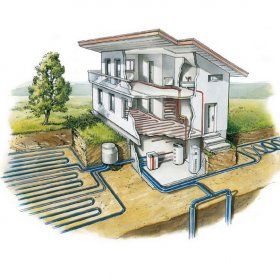
Many owners of private houses still believe that geothermal heating is almost a science fiction term, and it is relevant only for those regions where hot springs are boiling and there is high volcanic activity. And since such natural phenomena are rare, the prospects for using this alternative energy in our conditions look vague for many. In fact, a geothermal pump successfully generates heat even at low temperatures, so that even in a temperate climate it can be used quite efficiently. But is it possible to mount the geothermal heating of a house with your own hands? Let's try to figure this out.
Classification by structural type
The principle of geothermal heating is similar to the principle of an air conditioner or refrigerator. The main element is a heat pump included in two circuits.
The internal circuit is a traditional heating system consisting of pipes and radiators. External - an impressive heat exchanger located underground or in the water column. Inside it can circulate as a special liquid with antifreeze, and ordinary water. The coolant takes over the temperature of the medium and “warmed up” enters the heat pump, the accumulated heat is transferred to the internal circuit. Thus, water is heated in pipes and radiators.
A geothermal (heat) pump is a key element of the system. This is a compact unit, it takes up no more space than the washing machine familiar to our opinion. If we talk about productivity, then for every 1 kW of electricity consumed, the pump "gives out" up to 4-5 kW of thermal energy. While a conventional air conditioner, which has a similar principle of operation, 1 kW of heat will “respond” to 1 kW of consumed electricity.
It must be admitted that the device of this type of heating is the most expensive and time-consuming today. The lion's share of its value is the purchase of equipment and, of course, earthwork. Naturally, the thrifty owner is thinking, but is it possible to save, for example, on installation and do-it-yourself geothermal heating? In order to answer this question, it is necessary to understand which systems are used most often and to understand the features of their device.
There are other types of pumps used in heating systems. You will learn more about this from our article:https://aquatech.tomathouse.com/en/otoplenie/alt_otoplenie/teplovye-nasosy-dlya-otopleniya-doma.html
Horizontal heat exchanger
Quite often, a horizontal contour is used, with the device of which the pipes are laid in trenches to a depth greater than the level of soil freezing in a given area.
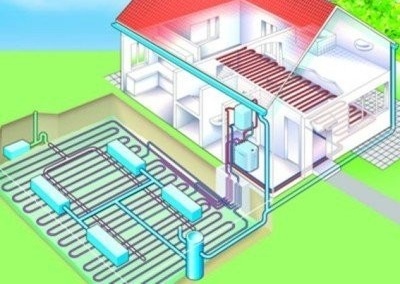
The disadvantage of a geothermal heating system with a horizontal circuit is the large area occupied by the collector
The disadvantage is that the area occupied by the circuit should be much larger than the house itself, so for heating a building with an area of 250 m², about 600 m² will “go” under the pipes. Not every developer can afford such a luxury.
In addition, there are inconveniences if the site is already ennobled, you have to observe, for example, the distance from the trees (1.5 m) and many other nuances.
Vertical heat exchanger
A more compact, but also more expensive option is a vertical heat exchanger. A large area will not be required for its installation, but special drilling equipment will be required.
Depth of the well, depending on the technology, can reach 50-200 m, but its service life is up to 100 years. This method is especially relevant when planning a geothermal country house heating with equipped adjoining territory, it allows you to save the landscape almost in its original form.
Water heat exchanger
The most economical geothermal installation uses the thermal energy of water. It is recommended if the distance to the nearest body of water does not exceed 100 m.
The contour of the pipes in the form of a spiral is laid to the bottom, the depth should be less than 2.5-3 m, that is, deeper than the freezing zone. The area of the reservoir is from 200 m². The main plus is that there is no need to perform labor-intensive excavation work, but it is necessary to obtain permission from special services. Having spent significant funds on expensive equipment, you should not save on high-quality installation. After all, it is from him that the quality and effectiveness of the entire system will depend.
As you can see, installing geothermal heating at home with your own hands is not so simple. Of all these types, perhaps only the last option will be quite simple to implement on their own. But even in this case, it is worth weighing, all the pros and cons.
About the advantages and disadvantages of the system
For the first time, geothermal heating was closely watched in the United States during the crisis in the 80s. Rather expensive installations were registered in the homes of the richest and most advanced, but gradually they became more accessible and more popular. Europe took note of the novelty and began to actively introduce on its open spaces. Now this type of heating is no longer a wonder, in Sweden, for example, about 70% of all heat is synthesized using heat pumps.
Manufacturers of miracle equipment and greens unanimously reiterate the advantages of this type of heating over all others, the main advantages that are emphasized are:
- for heating, the thermal energy of the earth is used, which is renewable and inexhaustible;
- there is no risk of fire;
- there is no need for the delivery and storage of fuel materials;
- during the operation of the equipment no harmful emissions are generated, the system is absolutely safe and environmentally friendly;
- the system works autonomously, does not need constant monitoring and intervention;
- it is economical, practically does not require maintenance costs from the owner;
- with all the variety of models, the coefficient of productivity of equipment remains consistently high.
The geothermal heating system showed itself well in combination with "warm floors". Such a duet provides an even temperature distribution and prevents the formation of overheating zones.
Important! This type of heating is most beneficial for homes with an area of up to 150 m², the owners of such small cottages assure that the costs pay off for some 3-4 years.
Read about other heating options in our next article:https://aquatech.tomathouse.com/en/otoplenie/alt_otoplenie/energosberegayushhee-otoplenie-chastnogo-doma.html.
Note that in the post-Soviet space, these systems have not yet become popular. This is largely due to a fairly significant investment that will need to be made at the very beginning, and a rather long payback period. It is rather difficult to convince our fellow citizens that this, in the end, is still economically profitable. Although, if we take into account the annual rise in price of conventional coolants and the fact that the system is designed on average for 100 years of efficient operation, the choice will seem quite justified.
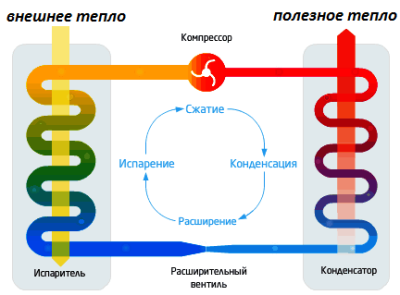
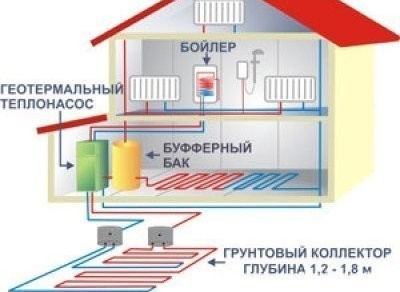

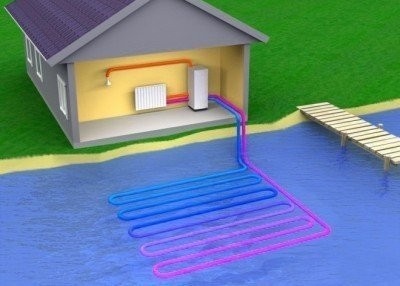
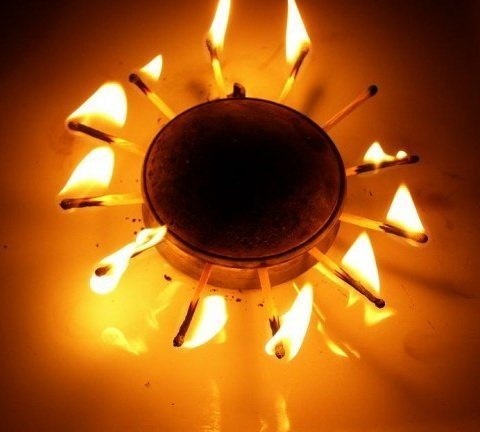
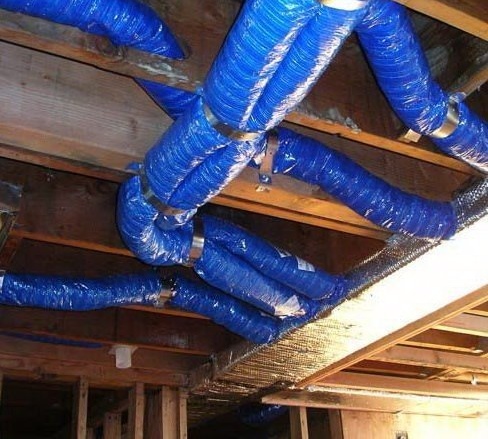
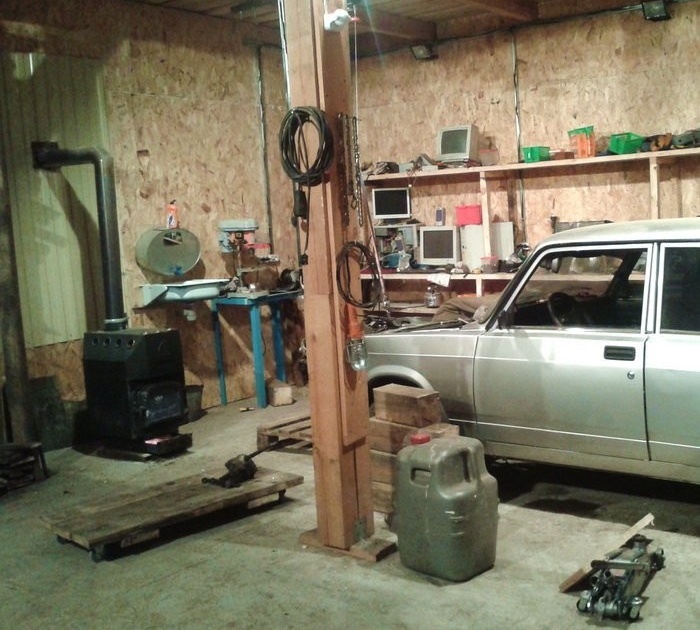
21 comments